
Johannes Vermeer, van Delft Painting Reproductions 1 of 2
1632-1675
Dutch Baroque Painter
Johannes Vermeer or Jan Vermeer (baptized October 31, 1632, died December 15, 1675) was a Dutch painter who specialized in domestic interior scenes of ordinary bourgeois life. His entire life was spent in the town of Delft. Vermeer was a moderately successful provincial painter in his lifetime. He seems to have never been particularly wealthy, perhaps due to the fact that he produced relatively few paintings, leaving his wife and eleven children in debt at his death. Virtually forgotten for nearly two hundred years, in 1866 the art critic Thore Burger published an essay attributing 66 pictures to him (only 34 paintings are firmly attributed to him today). Since that time Vermeer's reputation has grown astronomically, and he is now acknowledged as one of the greatest painters of the Dutch Golden Age, and is particularly renowned for his masterly treatment and use of light in his work.
Life
Relatively little is known about Vermeer's life. The only sources of information are some registers, a few official documents and comments by other artists. The following biography attempts to give an impression of what we can surmise about the life of this Dutch masterpainter.
Youth
Johannes Vermeer was born in 1632, in the city of Delft in the Netherlands. The precise date of his birth is unknown but it is known that he was baptised on October 31, 1632, in the Reformed Church in Delft. His father, Reynier Vermeer, was a lower middle-class silk weaver and an art dealer. He married Johannes' mother, Digna, who was from Antwerp, Belgium, in 1615. Reynier Vermeer's name actually was Reynier Vos (Fox), but he used the name Van der Meer. It was likely he who introduced the young Johannes to the art of painting. The Vermeer family bought a large inn, the "Mechelen" named after the homonymous Belgian town, near the market square in Delft in 1641. Reynier Vermeer probably served as inn-keeper while also acting as a merchant of paintings. After Reynier's death in 1652, Johannes Vermeer inherited the Mechelen as well as his father's art-dealing business.
Marriage and family
Despite the fact that he came from a Protestant family, he married a Catholic, named Catherina Bolnes, in April 1653. It was an unlikely marriage: in addition to the religious difference (Catholics were an unpopular religious minority in mainly Calvinist Holland), Bolnes' family was significantly wealthier than Vermeer's. Vermeer probably converted to Catholicism shortly before their marriage (certainly, all his children were named after Catholic saints rather than his own mother and father, and one of his paintings, The Allegory of Faith, manifests a Catholic belief in the Eucharist).
Some time after their marriage, the couple left the Mechelen and moved in with Catherina's mother, Maria Thins, a well-off widow, in a house in the "Papist corner" of the town, where the Catholics lived in relative isolation. Vermeer would live in his mother-in-law's house with his wife and children for the rest of his life. Maria apparently played an important role in their life, for they named their first daughter after her, and it is possible that she used her comfortable income to help support the struggling painter and his growing family. Maria Thins was a devotee of the Jesuit order in the Catholic Church, and this, too, seems to have influenced Johannes and Catherina, for they called their first son Ignatius, after the founding saint of the Jesuit Order. Johannes and Catherina had fourteen children in total, three of whom predeceased Vermeer.
Career
Vermeer was apprenticed as a painter, but it is not certain where he studied, nor with whom. It is generally believed that he studied in Delft and that his teacher was either Carel Fabritius (1622 - 1654) or Leonaert Bramer (1596 - 1674). On the 29th of December 1653, Vermeer became a member of the Saint Luke's Guild, which was a trade association for painters. During the Dutch Golden Age, painting was not considered an art, but a trade, a way to make a living. His financial difficulties are revealed by the guild's records, which establish that he could not initially pay the admission fee. However, in later years he evidently was well established: One of the town's richest citizens, Pieter van Ruijven, became his patron and bought many of his paintings. If he indeed completed only a small number of paintings, his income probably relied largely on his business as an art-dealer. In 1662 he was elected head of the guild and was reelected in 1663, 1670 and 1671, evidence that he was considered an established craftsman among his peers, and a respectable middle-class citizen.
However, a severe economic downturn struck the Netherlands after 1672, when the French invaded the country. This led to a collapse in demand for luxury items such as paintings, and consequently damaged Vermeer's business both as a painter and an art-dealer. With a large family to support, Vermeer was forced to borrow money. When Johannes Vermeer died in 1675, he left Catherina and their children with very little money and with several debts. In a written document his wife attributed her husband's death to the stress of financial pressures. Catherina asked the city council to take over the estate, including paintings, in order to pay off the debts. The famous Dutch microscopist, Antonie van Leeuwenhoek, who also lived in Delft and worked for the city council, was appointed trustee for the estate in 1676. Nineteen of Vermeer's paintings were bequeathed to Catherina and Maria; Catherina sold some of these paintings to pay creditors.
In Delft Vermeer had been a respected artist, but he was almost unknown outside his home town, and the fact that a local patron, van Ruijven, purchased much of his output reduced the possibility of his fame spreading. Vermeer's relatively short life, the demands of separate careers, and his extraordinary precision as a painter all help to explain his limited output. It is assumed that some of his paintings were lost after his death. Nonetheless, Vermeer is now considered one of the great masters of the seventeenth century.
Technique
Vermeer produced transparent colours by applying paint onto the canvas in loosely granular layers, a technique called pointille (not to be confused with pointillism). No drawings have been securely attributed to Vermeer, and his paintings offer few clues to preparatory methods. David Hockney, among other historians and advocates of the Hockney-Falco thesis, has speculated that Vermeer used a camera obscura to achieve precise positioning in his compositions, and this view seems to be supported by certain light and perspective effects which would result from the use of such lenses and not the naked eye alone; however, the extent of Vermeer's dependence upon the camera obscura is disputed by historians.
Themes
Vermeer painted mostly domestic interior scenes. His works are largely genre pieces and portraits, with the exception of two cityscapes. His subjects offer a cross-section of seventeenth century Dutch society, ranging from the portrayal of a simple milkmaid at work, to the luxury and splendour of rich notables and merchantmen in their roomy houses. Religious and scientific connotations can be found in his works.
Influence of other painters
Carel Fabritius (1622-1654) who spent his final years in Delft. Vermeer's ideas about perspective, and his tendency to paint everyday themes were possibly influenced by Fabritius.
Italian painter Caravaggio (1573-1610), indirectly through Dutch followers.
Leonaert Bramer, another painter from Delft, and witness to his marriage.
Vermeer owned a Dirck van Baburen painting, which appears in two of Vermeer's paintings.
Works
A chronology of Vermeer's work is complicated by the fact that only three paintings are dated: The Procuress (1656, Dresden, Gemaldegalerie), The Astronomer (1668, private collection), and The Geographer (1669, Frankfurt, Stadelsches). Two pictures are generally accepted as earlier than The Procuress; both are history paintings, painted in a warm palette and in a relatively large format for Vermeer - Christ in the House of Mary and Martha (Edinburgh, National Gallery) and Diana and her Companions (The Hague, Mauritshuis). After The Procuress almost all of Vermeer's paintings are of contemporary subjects in a smaller format, with a cooler palette dominated by blues, yellows and greys. It is to this period that practically all of his surviving works belong. They are usually domestic interiors with one or two figures lit by a window on the left. They are characterized by a serene sense of compositional balance and spatial order, unified by an almost pearly light. Mundane domestic or recreational activities become thereby imbued with a poetic timelessness (e.g. Woman Reading a Letter at an Open Window, Dresden, Gemaldegalerie). To this period also have been allocated Vermeer's two townscapes, View of Delft (The Hague, Mauritshuis) and A Street in Delft (Amsterdam, Rijksmuseum). A few of his paintings show a certain hardening of manner and these are generally thought to represent his late works. From this period come The Allegory of Faith (c 1670, New York, Metropolitan Museum) and The Letter (c 1670, Amsterdam, Rijksmuseum).
The often discussed sparkling pearly highlights in Vermeer's paintings have been linked to his probable use of a camera obscura, the primitive lens of which would produce halation and, even more noticeably, exaggerated perspective. Such effects can be seen in Lady at the Virginals with a Gentleman (London, Royal Collection). Vermeer's interest in optics is also attested in this work by the accurately observed mirror reflection above the lady at the virginals.
Life
Relatively little is known about Vermeer's life. The only sources of information are some registers, a few official documents and comments by other artists. The following biography attempts to give an impression of what we can surmise about the life of this Dutch masterpainter.
Youth
Johannes Vermeer was born in 1632, in the city of Delft in the Netherlands. The precise date of his birth is unknown but it is known that he was baptised on October 31, 1632, in the Reformed Church in Delft. His father, Reynier Vermeer, was a lower middle-class silk weaver and an art dealer. He married Johannes' mother, Digna, who was from Antwerp, Belgium, in 1615. Reynier Vermeer's name actually was Reynier Vos (Fox), but he used the name Van der Meer. It was likely he who introduced the young Johannes to the art of painting. The Vermeer family bought a large inn, the "Mechelen" named after the homonymous Belgian town, near the market square in Delft in 1641. Reynier Vermeer probably served as inn-keeper while also acting as a merchant of paintings. After Reynier's death in 1652, Johannes Vermeer inherited the Mechelen as well as his father's art-dealing business.
Marriage and family
Despite the fact that he came from a Protestant family, he married a Catholic, named Catherina Bolnes, in April 1653. It was an unlikely marriage: in addition to the religious difference (Catholics were an unpopular religious minority in mainly Calvinist Holland), Bolnes' family was significantly wealthier than Vermeer's. Vermeer probably converted to Catholicism shortly before their marriage (certainly, all his children were named after Catholic saints rather than his own mother and father, and one of his paintings, The Allegory of Faith, manifests a Catholic belief in the Eucharist).
Some time after their marriage, the couple left the Mechelen and moved in with Catherina's mother, Maria Thins, a well-off widow, in a house in the "Papist corner" of the town, where the Catholics lived in relative isolation. Vermeer would live in his mother-in-law's house with his wife and children for the rest of his life. Maria apparently played an important role in their life, for they named their first daughter after her, and it is possible that she used her comfortable income to help support the struggling painter and his growing family. Maria Thins was a devotee of the Jesuit order in the Catholic Church, and this, too, seems to have influenced Johannes and Catherina, for they called their first son Ignatius, after the founding saint of the Jesuit Order. Johannes and Catherina had fourteen children in total, three of whom predeceased Vermeer.
Career
Vermeer was apprenticed as a painter, but it is not certain where he studied, nor with whom. It is generally believed that he studied in Delft and that his teacher was either Carel Fabritius (1622 - 1654) or Leonaert Bramer (1596 - 1674). On the 29th of December 1653, Vermeer became a member of the Saint Luke's Guild, which was a trade association for painters. During the Dutch Golden Age, painting was not considered an art, but a trade, a way to make a living. His financial difficulties are revealed by the guild's records, which establish that he could not initially pay the admission fee. However, in later years he evidently was well established: One of the town's richest citizens, Pieter van Ruijven, became his patron and bought many of his paintings. If he indeed completed only a small number of paintings, his income probably relied largely on his business as an art-dealer. In 1662 he was elected head of the guild and was reelected in 1663, 1670 and 1671, evidence that he was considered an established craftsman among his peers, and a respectable middle-class citizen.
However, a severe economic downturn struck the Netherlands after 1672, when the French invaded the country. This led to a collapse in demand for luxury items such as paintings, and consequently damaged Vermeer's business both as a painter and an art-dealer. With a large family to support, Vermeer was forced to borrow money. When Johannes Vermeer died in 1675, he left Catherina and their children with very little money and with several debts. In a written document his wife attributed her husband's death to the stress of financial pressures. Catherina asked the city council to take over the estate, including paintings, in order to pay off the debts. The famous Dutch microscopist, Antonie van Leeuwenhoek, who also lived in Delft and worked for the city council, was appointed trustee for the estate in 1676. Nineteen of Vermeer's paintings were bequeathed to Catherina and Maria; Catherina sold some of these paintings to pay creditors.
In Delft Vermeer had been a respected artist, but he was almost unknown outside his home town, and the fact that a local patron, van Ruijven, purchased much of his output reduced the possibility of his fame spreading. Vermeer's relatively short life, the demands of separate careers, and his extraordinary precision as a painter all help to explain his limited output. It is assumed that some of his paintings were lost after his death. Nonetheless, Vermeer is now considered one of the great masters of the seventeenth century.
Technique
Vermeer produced transparent colours by applying paint onto the canvas in loosely granular layers, a technique called pointille (not to be confused with pointillism). No drawings have been securely attributed to Vermeer, and his paintings offer few clues to preparatory methods. David Hockney, among other historians and advocates of the Hockney-Falco thesis, has speculated that Vermeer used a camera obscura to achieve precise positioning in his compositions, and this view seems to be supported by certain light and perspective effects which would result from the use of such lenses and not the naked eye alone; however, the extent of Vermeer's dependence upon the camera obscura is disputed by historians.
Themes
Vermeer painted mostly domestic interior scenes. His works are largely genre pieces and portraits, with the exception of two cityscapes. His subjects offer a cross-section of seventeenth century Dutch society, ranging from the portrayal of a simple milkmaid at work, to the luxury and splendour of rich notables and merchantmen in their roomy houses. Religious and scientific connotations can be found in his works.
Influence of other painters
Carel Fabritius (1622-1654) who spent his final years in Delft. Vermeer's ideas about perspective, and his tendency to paint everyday themes were possibly influenced by Fabritius.
Italian painter Caravaggio (1573-1610), indirectly through Dutch followers.
Leonaert Bramer, another painter from Delft, and witness to his marriage.
Vermeer owned a Dirck van Baburen painting, which appears in two of Vermeer's paintings.
Works
A chronology of Vermeer's work is complicated by the fact that only three paintings are dated: The Procuress (1656, Dresden, Gemaldegalerie), The Astronomer (1668, private collection), and The Geographer (1669, Frankfurt, Stadelsches). Two pictures are generally accepted as earlier than The Procuress; both are history paintings, painted in a warm palette and in a relatively large format for Vermeer - Christ in the House of Mary and Martha (Edinburgh, National Gallery) and Diana and her Companions (The Hague, Mauritshuis). After The Procuress almost all of Vermeer's paintings are of contemporary subjects in a smaller format, with a cooler palette dominated by blues, yellows and greys. It is to this period that practically all of his surviving works belong. They are usually domestic interiors with one or two figures lit by a window on the left. They are characterized by a serene sense of compositional balance and spatial order, unified by an almost pearly light. Mundane domestic or recreational activities become thereby imbued with a poetic timelessness (e.g. Woman Reading a Letter at an Open Window, Dresden, Gemaldegalerie). To this period also have been allocated Vermeer's two townscapes, View of Delft (The Hague, Mauritshuis) and A Street in Delft (Amsterdam, Rijksmuseum). A few of his paintings show a certain hardening of manner and these are generally thought to represent his late works. From this period come The Allegory of Faith (c 1670, New York, Metropolitan Museum) and The Letter (c 1670, Amsterdam, Rijksmuseum).
The often discussed sparkling pearly highlights in Vermeer's paintings have been linked to his probable use of a camera obscura, the primitive lens of which would produce halation and, even more noticeably, exaggerated perspective. Such effects can be seen in Lady at the Virginals with a Gentleman (London, Royal Collection). Vermeer's interest in optics is also attested in this work by the accurately observed mirror reflection above the lady at the virginals.
38 Vermeer Paintings

The Milkmaid (The Kitchen Maid) c.1658/60
Oil Painting
$1864
$1864
Canvas Print
$49.40
$49.40
SKU: VVD-1067
Johannes Vermeer, van Delft
Original Size: 45.5 x 41 cm
Rijksmuseum, Amsterdam, Netherlands
Johannes Vermeer, van Delft
Original Size: 45.5 x 41 cm
Rijksmuseum, Amsterdam, Netherlands

Woman Reading a Letter c.1663/64
Oil Painting
$1843
$1843
Canvas Print
$49.40
$49.40
SKU: VVD-1068
Johannes Vermeer, van Delft
Original Size: 46.5 x 39 cm
Rijksmuseum, Amsterdam, Netherlands
Johannes Vermeer, van Delft
Original Size: 46.5 x 39 cm
Rijksmuseum, Amsterdam, Netherlands
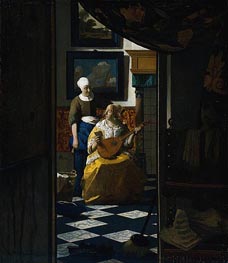
The Love Letter c.1669/70
Oil Painting
$1966
$1966
Canvas Print
$49.40
$49.40
SKU: VVD-1069
Johannes Vermeer, van Delft
Original Size: 44 x 38.5 cm
Rijksmuseum, Amsterdam, Netherlands
Johannes Vermeer, van Delft
Original Size: 44 x 38.5 cm
Rijksmuseum, Amsterdam, Netherlands
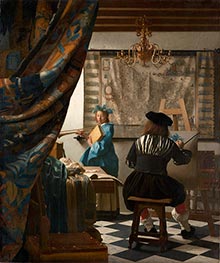
The Art of Painting (The Artist's Studio) c.1666/67
Oil Painting
$7800
$7800
Canvas Print
$62.61
$62.61
SKU: VVD-1070
Johannes Vermeer, van Delft
Original Size: 120 x 100 cm
Kunsthistorisches Museum, Vienna, Austria
Johannes Vermeer, van Delft
Original Size: 120 x 100 cm
Kunsthistorisches Museum, Vienna, Austria
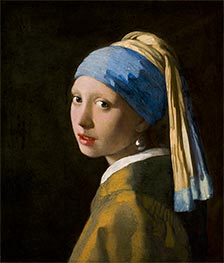
The Girl with a Pearl Earring c.1665/66
Oil Painting
$690
$690
Canvas Print
$49.40
$49.40
SKU: VVD-1071
Johannes Vermeer, van Delft
Original Size: 46.5 x 40 cm
Mauritshuis Royal Picture Gallery, The Hague, Netherlands
Johannes Vermeer, van Delft
Original Size: 46.5 x 40 cm
Mauritshuis Royal Picture Gallery, The Hague, Netherlands
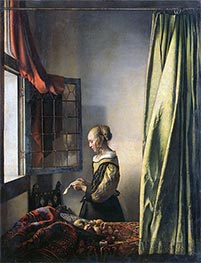
Girl Reading a Letter at an Open Window c.1657/59
Oil Painting
$2249
$2249
Canvas Print
$57.17
$57.17
SKU: VVD-1072
Johannes Vermeer, van Delft
Original Size: 83 x 64.5 cm
Gemaldegalerie Alte Meister, Dresden, Germany
Johannes Vermeer, van Delft
Original Size: 83 x 64.5 cm
Gemaldegalerie Alte Meister, Dresden, Germany
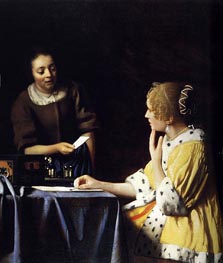
Mistress and Maid c.1666/67
Oil Painting
$2282
$2282
Canvas Print
$63.30
$63.30
SKU: VVD-1073
Johannes Vermeer, van Delft
Original Size: 90.2 x 78.7 cm
Frick Collection, New York, USA
Johannes Vermeer, van Delft
Original Size: 90.2 x 78.7 cm
Frick Collection, New York, USA
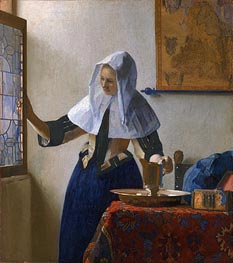
Young Woman with a Water Pitcher c.1664/65
Oil Painting
$1528
$1528
Canvas Print
$49.40
$49.40
SKU: VVD-1074
Johannes Vermeer, van Delft
Original Size: 45.7 x 40.6 cm
Metropolitan Museum of Art, New York, USA
Johannes Vermeer, van Delft
Original Size: 45.7 x 40.6 cm
Metropolitan Museum of Art, New York, USA
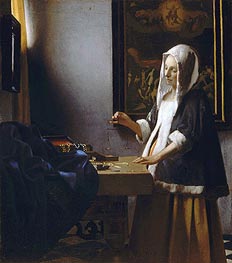
Woman Holding a Balance c.1664
Oil Painting
$1471
$1471
Canvas Print
$49.40
$49.40
SKU: VVD-1075
Johannes Vermeer, van Delft
Original Size: 42.5 x 38 cm
National Gallery of Art, Washington, USA
Johannes Vermeer, van Delft
Original Size: 42.5 x 38 cm
National Gallery of Art, Washington, USA

Woman with a Lute near a Window c.1664
Oil Painting
$1577
$1577
Canvas Print
$58.13
$58.13
SKU: VVD-1076
Johannes Vermeer, van Delft
Original Size: 51.4 x 45.7 cm
Metropolitan Museum of Art, New York, USA
Johannes Vermeer, van Delft
Original Size: 51.4 x 45.7 cm
Metropolitan Museum of Art, New York, USA

Girl with a Red Hat c.1665/66
Oil Painting
$664
$664
Canvas Print
$49.40
$49.40
SKU: VVD-1077
Johannes Vermeer, van Delft
Original Size: 22.8 x 18 cm
National Gallery of Art, Washington, USA
Johannes Vermeer, van Delft
Original Size: 22.8 x 18 cm
National Gallery of Art, Washington, USA

Portrait of a Young Woman c.1667/68
Oil Painting
$594
$594
Canvas Print
$49.40
$49.40
SKU: VVD-1078
Johannes Vermeer, van Delft
Original Size: 44.5 x 40 cm
Metropolitan Museum of Art, New York, USA
Johannes Vermeer, van Delft
Original Size: 44.5 x 40 cm
Metropolitan Museum of Art, New York, USA
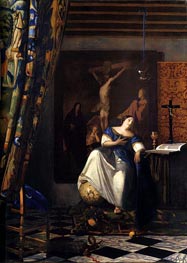
Allegory of Faith c.1671/74
Oil Painting
$2329
$2329
Canvas Print
$71.56
$71.56
SKU: VVD-1079
Johannes Vermeer, van Delft
Original Size: 114.3 x 88.9 cm
Metropolitan Museum of Art, New York, USA
Johannes Vermeer, van Delft
Original Size: 114.3 x 88.9 cm
Metropolitan Museum of Art, New York, USA
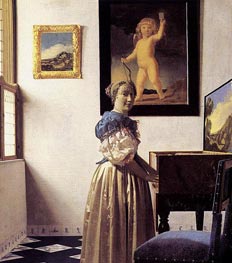
Young Woman Standing at a Virginal c.1672/73
Oil Painting
$1654
$1654
Canvas Print
$57.83
$57.83
SKU: VVD-1080
Johannes Vermeer, van Delft
Original Size: 51.7 x 45.2 cm
National Gallery, London, United Kingdom
Johannes Vermeer, van Delft
Original Size: 51.7 x 45.2 cm
National Gallery, London, United Kingdom
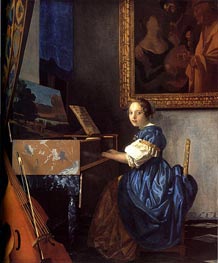
Lady Seated at a Virginal c.1673/75
Oil Painting
$1721
$1721
Canvas Print
$57.99
$57.99
SKU: VVD-1081
Johannes Vermeer, van Delft
Original Size: 51.5 x 45.5 cm
National Gallery, London, United Kingdom
Johannes Vermeer, van Delft
Original Size: 51.5 x 45.5 cm
National Gallery, London, United Kingdom

The Guitar Player c.1670
Oil Painting
$1654
$1654
Canvas Print
$60.74
$60.74
SKU: VVD-1082
Johannes Vermeer, van Delft
Original Size: 53 x 46.3 cm
Kenwood House (The Iveagh Bequest), London, United Kingdom
Johannes Vermeer, van Delft
Original Size: 53 x 46.3 cm
Kenwood House (The Iveagh Bequest), London, United Kingdom
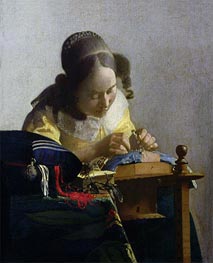
The Lacemaker c.1669/70
Oil Painting
$778
$778
Canvas Print
$49.40
$49.40
SKU: VVD-1083
Johannes Vermeer, van Delft
Original Size: 24.5 x 21 cm
Louvre Museum, Paris, France
Johannes Vermeer, van Delft
Original Size: 24.5 x 21 cm
Louvre Museum, Paris, France

Lady Writing a Letter with Her Maid c.1670
Oil Painting
$2114
$2114
Canvas Print
$75.64
$75.64
SKU: VVD-1084
Johannes Vermeer, van Delft
Original Size: 71.1 x 58.4 cm
National Gallery, Dublin, Ireland
Johannes Vermeer, van Delft
Original Size: 71.1 x 58.4 cm
National Gallery, Dublin, Ireland

The Geographer c.1668/69
Oil Painting
$1654
$1654
Canvas Print
$61.12
$61.12
SKU: VVD-1085
Johannes Vermeer, van Delft
Original Size: 53 x 46.6 cm
Stadel Museum, Frankfurt, Germany
Johannes Vermeer, van Delft
Original Size: 53 x 46.6 cm
Stadel Museum, Frankfurt, Germany
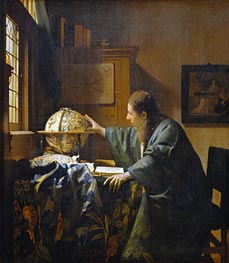
The Astronomer 1668
Oil Painting
$1634
$1634
Canvas Print
$55.69
$55.69
SKU: VVD-1086
Johannes Vermeer, van Delft
Original Size: 50 x 45 cm
Louvre Museum, Paris, France
Johannes Vermeer, van Delft
Original Size: 50 x 45 cm
Louvre Museum, Paris, France
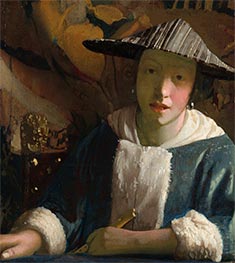
Young Girl with a Flute c.1665/75
Oil Painting
$905
$905
Canvas Print
$49.40
$49.40
SKU: VVD-1087
Johannes Vermeer, van Delft
Original Size: 20 x 17.8 cm
National Gallery of Art, Washington, USA
Johannes Vermeer, van Delft
Original Size: 20 x 17.8 cm
National Gallery of Art, Washington, USA
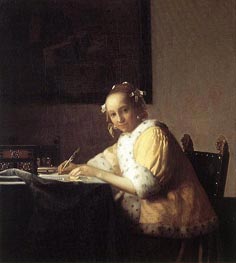
A Lady Writing a Letter c.1665/66
Oil Painting
$1424
$1424
Canvas Print
$49.40
$49.40
SKU: VVD-1088
Johannes Vermeer, van Delft
Original Size: 45 x 39.9 cm
National Gallery of Art, Washington, USA
Johannes Vermeer, van Delft
Original Size: 45 x 39.9 cm
National Gallery of Art, Washington, USA
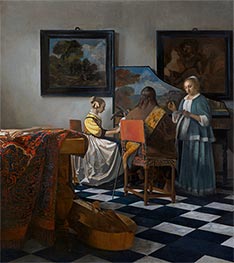
The Concert c.1665/66
Oil Painting
$2426
$2426
Canvas Print
$66.57
$66.57
SKU: VVD-1089
Johannes Vermeer, van Delft
Original Size: 72.5 x 64.7 cm
Isabella Stewart Gardner Museum, Boston, USA
Johannes Vermeer, van Delft
Original Size: 72.5 x 64.7 cm
Isabella Stewart Gardner Museum, Boston, USA
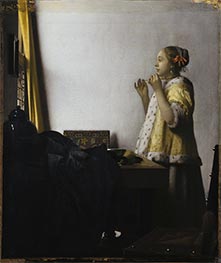
Woman with a Pearl Necklace c.1663/65
Oil Painting
$1398
$1398
Canvas Print
$62.89
$62.89
SKU: VVD-1090
Johannes Vermeer, van Delft
Original Size: 56.1 x 47.4 cm
Gemaldegalerie, Berlin, Germany
Johannes Vermeer, van Delft
Original Size: 56.1 x 47.4 cm
Gemaldegalerie, Berlin, Germany